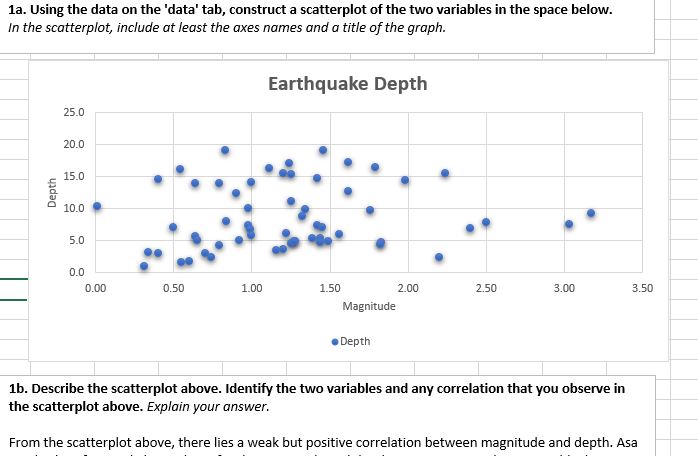Analysis with Correlation and Regression
Scenario
According to the U.S. Geological Survey (USGS), the probability of a magnitude 6.7 or greater earthquake in the Greater Bay Area is 63%, about 2 out of 3, in the next 30 years. In April 2008, scientists and engineers released a new earthquake forecast for the State of California called the Uniform California Earthquake Rupture Forecast (UCERF).
As a junior analyst at the USGS, you are tasked to determine whether there is sufficient evidence to support the claim of a linear correlation between the magnitudes and depths from the earthquakes. Download the Excel spreadsheet provided below with the data and questions.
Instructions
The variables studied in the Excel sheet are:
- Magnitude measured on the Richter scale
- Depth in km
Scenario
According to the U.S. Geological Survey (USGS), the probability of a magnitude 6.7 or greater earthquake in the Greater Bay Area is 63%, about 2 out of 3, in the next 30 years. In April 2008, scientists and engineers released a new earthquake forecast for the State of California called the Uniform California Earthquake Rupture Forecast (UCERF).
As a junior analyst at the USGS, you are tasked to determine whether there is sufficient evidence to support the claim of a linear correlation between the magnitudes and depths from the earthquakes. Download the Excel spreadsheet provided below with the data and questions.
Instructions
The variables studied in the Excel sheet are:
- Magnitude measure on the Richter scale
- Depth in km
Using the data on the ‘data’ tab, construct a scatterplot of the two variables in the space below. In the scatterplot, include at least the axes names and a title of the graph.
Describe the scatterplot above. Identify the two variables and any correlation that you observe in the scatterplot above. Explain your answer.
Answer preview for Analysis with Correlation and Regression

APA
300 Words
